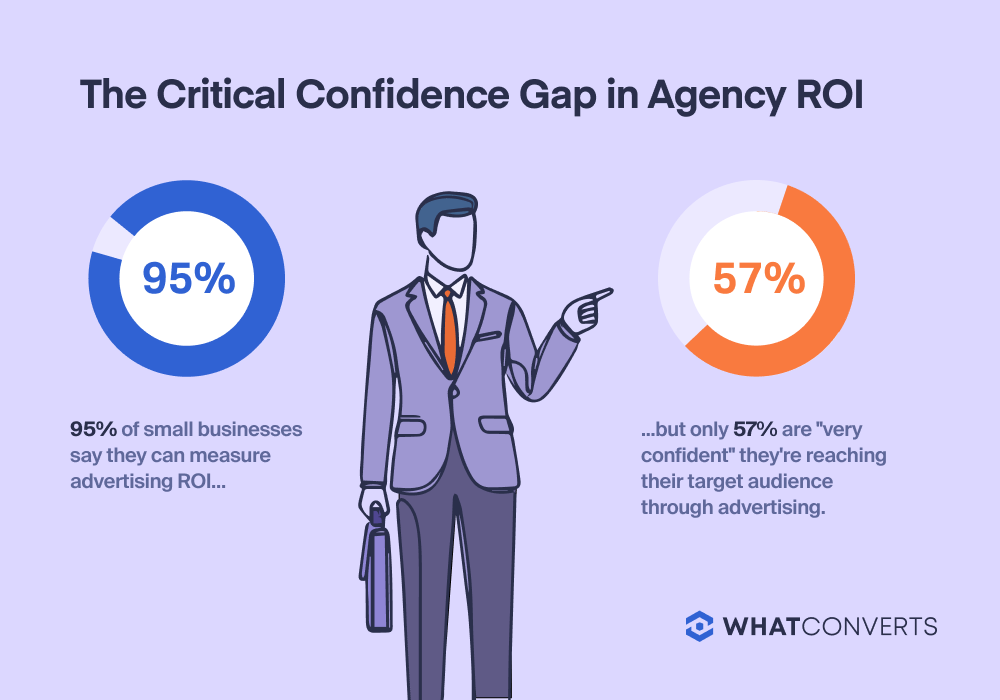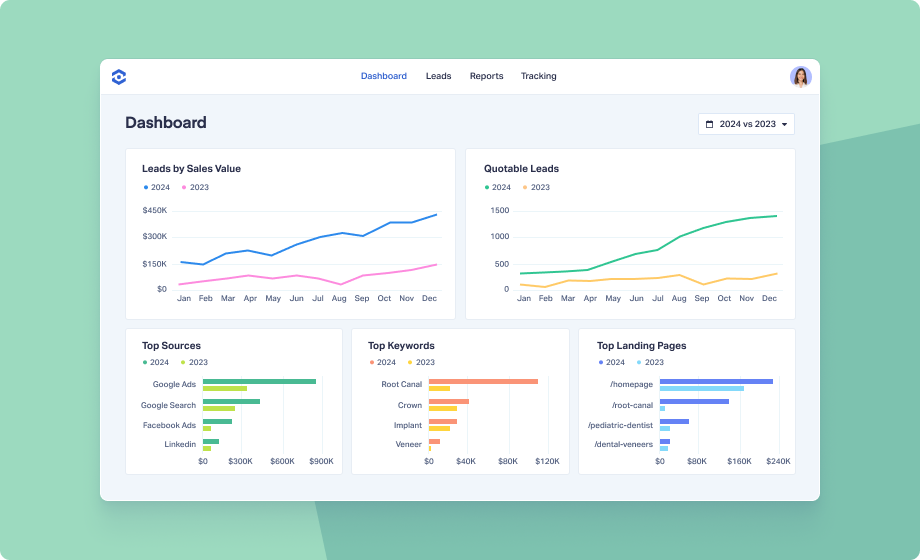
According to Intuit, small businesses will spend $640 billion on advertising in 2025. Ask them if they can measure ROI, and 95% say yes.
They're wrong.
While 95% think they’re measuring ad ROI, only 25% are doing it consistently. And just 57% are confident they're reaching their target audience. But measuring conversions from the wrong audience isn't "measuring ROI"—it's measuring wasted ad spend.
Here’s where the confidence gap comes from. A dental clinic runs three Google Ads campaigns:
- Campaign A: $500 per conversion
- Campaign B: $1,400 per conversion
- Campaign C: $1,500 per conversion
Every dashboard says Campaign A wins.
But when you actually track those conversions all the way to their outcomes, the truth surfaces: Campaign A generated zero revenue. Those cheap conversions were spam calls, existing patients, and price shoppers. Campaigns B and C—the "expensive" ones—produced every single new patient.
Without attribution, you’re doubling budget to Campaign A and cutting funds from everything else. You’re in that 95% that thinks they’re measuring ROI, all while you throw money at garbage.
Read More: 2x Ad Budget, 2x Clients: ROI Reporting Fuels Growth [Case Study]
Why Confidence Doesn't Equal Accuracy
The Intuit SMB MediaLabs report shows 95% of small businesses say they can measure advertising ROI, but only 25% can actually do it consistently.
Which means 70% of businesses claiming they measure ROI are doing it inconsistently at best.
The problem is that many SMBs think tracking conversions is the same as measuring real business value. They see form fills and phone calls in dashboards. They watch conversion counts climb. They calculate cost per conversion.
But conversions don't pay bills. Customers do.
The confidence gap shows up again when you look at targeting: while 95% say they can measure ROI, only 57% are "very confident" they're reaching their target audience through advertising. The other 43% are merely "somewhat confident" or worse.
If you're not sure your conversions are coming from qualified prospects rather than unqualified traffic, you can't measure true ROI.
Cost per conversion from the wrong people isn't ROI—it's waste per lead.
Closing the Gap Between Conversions and Customers
Revenue attribution requires a connection between three pieces most platforms treat as separate.
The marketing source. Which ad, keyword, and campaign generated the click. Standard tracking handles this well.
The lead details. Who the prospect behind the conversion was and what they actually said or did. A phone call is a conversion—but was it a qualified prospect? An existing customer? Spam? Traditional analytics can't tell the difference.
The business outcome. Which conversions became quotes, which quotes became customers, and which customers generated revenue. Most SMBs track this in spreadsheets or CRMs, completely disconnected from marketing data.
Lead tracking platforms like WhatConverts bridge these gaps. Every conversion gets captured with complete context—call recordings, form submissions, chat transcripts. When a lead becomes a customer and generates $5,000, that value attaches to the specific campaign, keyword, and ad that generated it.
Cost per customer. Revenue per campaign. True return on ad spend.
From Measurement to Optimization
Once campaigns connect to revenue, optimization stops being guesswork.
The dental clinic can now see Campaign A generated five times more conversions but zero revenue. Campaign B's conversions cost more—but they're worth paying for.
So what makes Campaign B different? WhatConverts surfaces the answer:
- Campaign B targets longtail keywords with higher buyer intent
- Its calls last 4 minutes average versus 30 seconds for Campaign A
- 75% mention specific procedures in call recordings
- Campaign A's conversions mostly ask about prices or call the wrong office
Optimization becomes systematic. Cut Campaign A budget. Increase Campaign B spend. Create a new Campaign D targeting similar longtail keywords. Set up Lead Intelligence rules to automatically score leads based on call duration and keywords mentioned.
What True Attribution Unlocks
When measurement connects marketing spend to business outcomes:
- Track every lead back to its marketing source—not just the click but the complete conversion with recordings, form data, and customer journey
- Connect conversions to business outcomes—linking each lead to quote value, sales value, and final revenue
- Identify which campaigns generate actual customers—not just conversion volume but customer volume and value
- Optimize toward revenue, not conversion counts—shifting budget from high-volume/low-value to high-value campaigns
- Prove ROI with revenue data—showing exactly how much business each campaign generated
This is how the 25% of companies measuring ROI consistently operate. And it's why they're comfortable spending more.
Ready to close the gap between conversion tracking and revenue attribution? Sign up for your free 14-day WhatConverts trial today and start connecting marketing spend to actual business outcomes—or book a demo to see how agencies are proving ROI with complete lead-to-revenue attribution.
Get a FREE presentation of WhatConverts
One of our marketing experts will give you a full presentation of how WhatConverts can help you grow your business.
Schedule a Demo
Grow your business with WhatConverts







